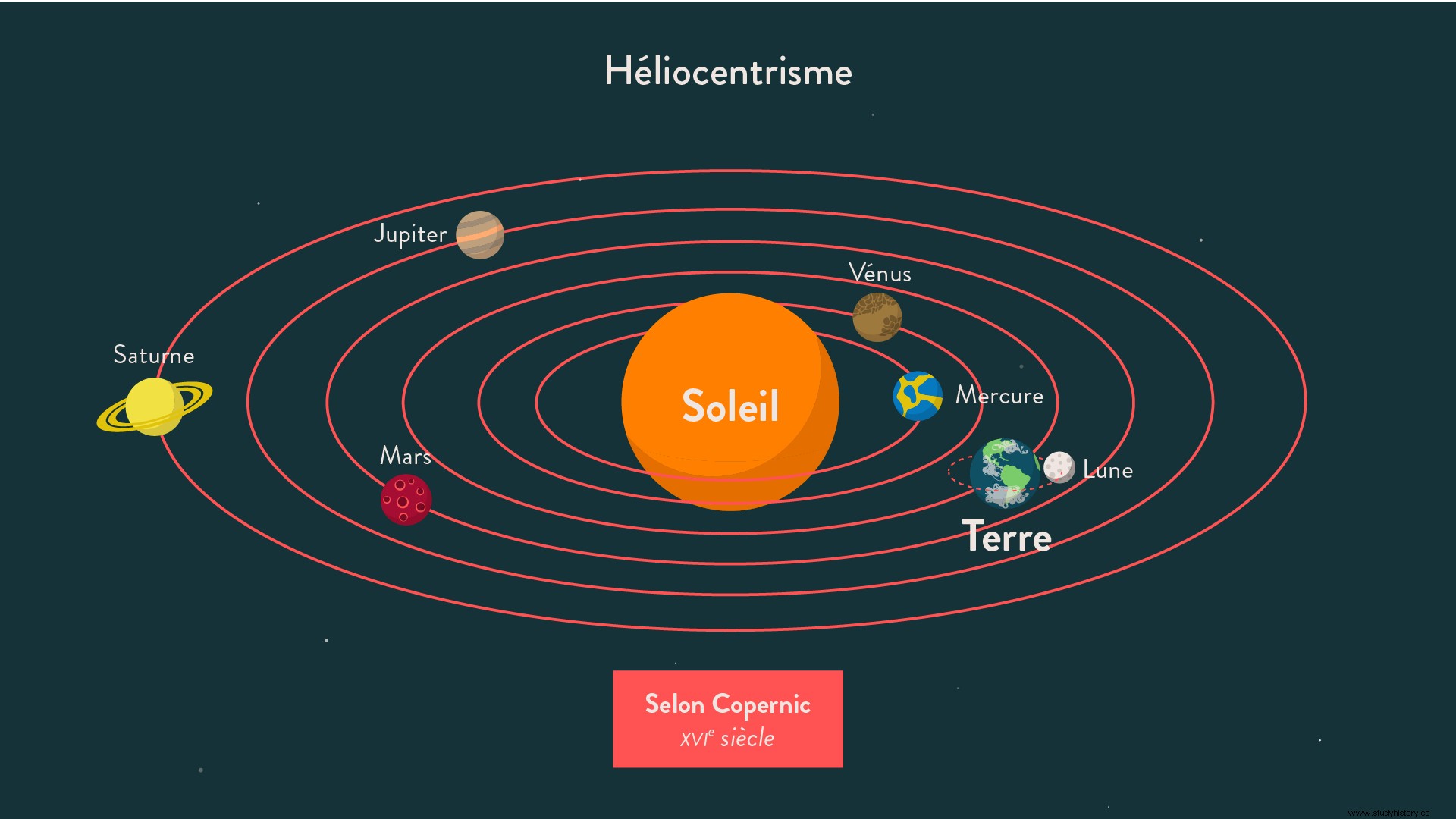If some scientists had mentioned that the Earth can revolve around the sun, what is called heliocentrism (helios meaning sun in Greek), like Philolaos of Croton (V e century BC) or Aristarchus of Samos (III th century BC), their theories have not, according to Archimedes, been studied. Ptolemy and Aristotle, on the other hand, place the Earth at the center of the universe (geocentrism). This last theory was recognized almost unanimously until the 16th century. century.
1512-1610

Characters
Aristarchus of Samos
Nicolaus Copernicus
Galileo
Procedure
Canon (clergyman) Nicolas Copernicus (1473-1543) had an early passion for astronomy. During a stay in Bologna (Italy), he notably studied the theories of the universe of Aristarchus of Samos. Observing the stars, Nicolas Copernic exposes his first principles, contradicting Ptolemy who advocates, from the II e century, geocentrism. Indeed, Copernicus asserts not only that the Earth rotates on itself, but that it revolves around the sun, like other planets. He also notes that the moon is a satellite of the earth. The sun then becomes the center of the universe (heliocentrism).
His manuscript De hypothesibus motuum coelestium a se constitutis commentariolus , better known by the short title of Commentariolus – circulates, therefore, under the coat, between 1512 and 1513. Indeed, it is unthinkable at the time to refute the theory of Ptolemy. The Church, in particular, is very attached to geocentrism because the Earth and man, created by God, are at the center of the Universe. It is in his De revolutionibus orbium caelestium (Celestial Orb Revolutions ), edited in Nuremberg and published posthumously that Copernic exposes all his theory. In his preface, he insists that his theory is only a hypothesis so as not to offend the Church; he will see the first copy just before dying, on May 24, 1543.
About a century later, in 1610, the Italian Galileo (1564-1642) turned to astronomy and the Copernican revolution... which he confirmed. He thus exposes the mechanical principles which explain heliocentrism. Indeed, thanks to the invention of the optical telescope, he observes the stars. In January 1610, he detected 4 satellites of Jupiter and understood that they revolve around the planet just as the moon does with the Earth, and that the two planets also revolve around the Sun, the satellites not always being visible. In 1610 he published his Messenger des Astres as well as Dialogue concerning the two main systems of the world in 1632, which earned him a trial by the Inquisition. He abjures to escape death but would have pronounced this sentence, which has remained famous, in a murmur "And yet, she turns" !
Consequences
The discoveries of Nicolas Copernicus, confirmed by Galileo, are a real revolution and completely upset the vision of the world of the time. From now on, the earth is no longer the center of the Universe but one planet among others, which generates many scientific and theological questions. With the confirmation of heliocentrism by Galileo, science will gradually dissociate itself from the Church.
